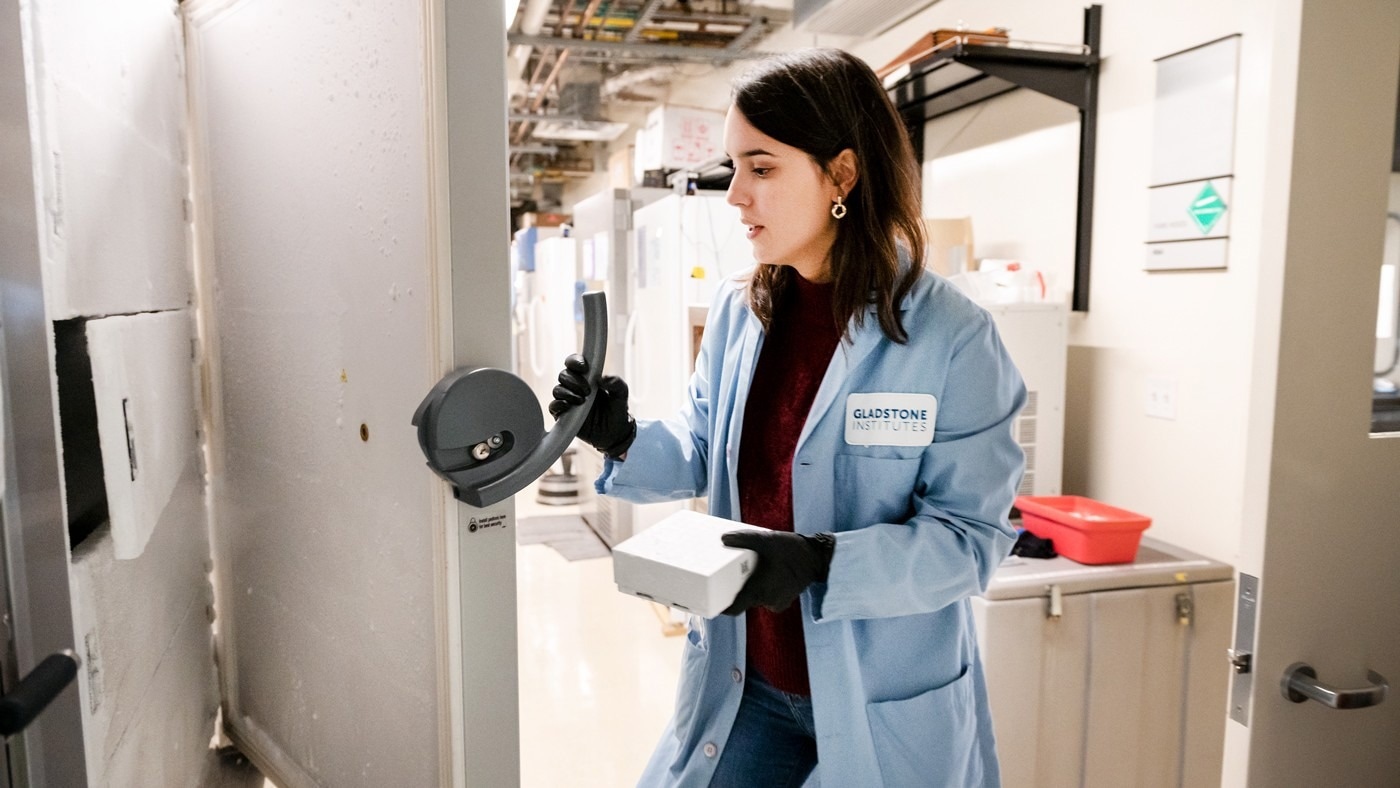Reviewed by Danielle Ellis, B.Sc.Jul 18 2023
A set of molecules controls cells as they proliferate and take on certain identities and spatial placements within a human embryo as it develops. These signaling molecules direct a single layer of embryonic stem cells to generate three layers of diverse cell types that will ultimately become different regions of the body during a critical process known as gastrulation.
 Gladstone scientists—including Ivana Vasic, seen here—show that barriers between stem cells play a crucial role in human development and offer a new potential route for fertility treatment. Image Credit: Gladstone Institutes
Gladstone scientists—including Ivana Vasic, seen here—show that barriers between stem cells play a crucial role in human development and offer a new potential route for fertility treatment. Image Credit: Gladstone Institutes
The gastrulation process in human embryos may be significantly influenced by tight junctions between cells, according to a new study from the Gladstone Institutes’ iPS Cell Research Center.
This study has exciting implications for the way we design gastrulation models and other lab techniques for differentiating stem cells into specialized cell types. The better we understand signaling mechanisms in embryos, the more easily we can recapitulate these processes in robust, reproducible ways.”
Shinya Yamanaka, MD, PhD, Study Senior Author and Senior Investigator, Gladstone Institutes
The group is already using its findings to create fresh methods for converting stem cells cultured in a dish into human egg cells—a process that could eventually be employed for in vitro fertilization.
Discovery on the Edge
The development of the entire human body is based on gastrulation. Starting with a layer of induced pluripotent stem cells (iPS cells), adult cells that have been reprogrammed to resemble embryonic stem cells and can differentiate into any cell type in the body, researchers have discovered ways of replicating a simplified version of this fundamental process in a dish.
A protein called BMP4, a crucial signaling molecule in gastrulation, is then added by researchers, causing the cells in the dish to start dividing into the three layers of cells present in the embryo.
It has not been obvious why some cells differentiate into one kind of cell while others develop into various cell types, given that all of the cells seem to receive the identical BMP4 signal.
This has been kind of a head scratcher in the field. All these cells are either interpreting the same cue from BMP4 differently, or they are not really getting the same cue.”
Ivana Vasic, PhD, Study Lead Author and Former Postdoctoral Researcher, Gladstone Institutes
Vasic discovered that the iPS cells grouped in the dish have proteins that are the building blocks for tight junctions, which are barriers between cells while constructing a lab model of gastrulation. She did, however, observe that the tight connections don't usually truly come together.
Growing the cells in a less congested environment allowed the tight junctions to form consistently, according to Yamanaka, Vasic, and his colleagues.
The “aha” moment came when scientists injected BMP4 into the unconfined cells: only cells near the edge of the cluster received enough BMP4 to activate molecular pathways that would prod them to differentiate into various layer cell types.
Vasic added, “Tight junctions between adjacent cells seem to make them impervious to signals from BMP4. But the edge cells don’t have a buddy to form tight junctions with on their outer side, which means they are getting the strongest cues from BMP4.”
TJP1, a protein essential for creating tight junctions in iPS cells, was suppressed using CRISPR genome editing technology by the researchers to demonstrate the significance of tight junctions in gastrulation. They found that all cells, not only the edge cells, were stimulated when BMP4 was given to cells missing the TJP1 protein.
Yamanaka stated, “We showed that removing the tight junctions made all the cells respond to BMP4. This suggests that tight junctions block cells from responding to signals in gastrulation models, and more fundamentally, that the structure of cells is very important to how they receive differentiation signals.”
Todd McDevitt, PhD, former senior investigator at Gladstone and a senior author of the study, added, “Broadly speaking, this study demonstrates how perturbations to innate properties of iPS cells can modulate their sensitivity to extracellular cues and alter their cell fate trajectory. This principle could be a game changer for unlocking the potential of iPS cells to produce more homogeneous populations of differentiated cells for therapeutic applications.”
Creating Egg Cells in a Dish
The group then looked more closely at which cells had been triggered by BMP4 after disrupting tight junction development.
“We stumbled upon a very exciting finding: it turns out that we could create a special type of cell called a primordial germ cell-like cell. These are stem cells produced in a lab that resemble the human precursors of sperm and egg cells,” Vasic further stated.
The production of primordial germ cell-like cells from iPS cells has proven challenging, despite the fact that scientists have long searched for a dependable technique. Vasic and her coworkers had identified that inhibiting TJP1 could act as the foundation of an innovative technique to effectively produce these special cells.
Vasic has now formed a new company, Vitra Labs, to use this approach in a potential new strategy for treating infertility in women.
Vasic concluded, “We are essentially trying to recapitulate the biological process of egg production, so that we can generate eggs that people could use for in vitro fertilization. It is kind of the cherry on top of our study.”
Source:
Journal reference:
Vasic, I., et al. (2023). Loss of TJP1 disrupts gastrulation patterning and increases differentiation toward the germ cell lineage in human pluripotent stem cells. Human Genetics. doi.org/10.1016/j.devcel.2023.05.019